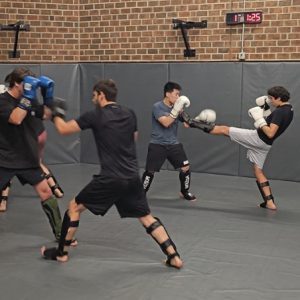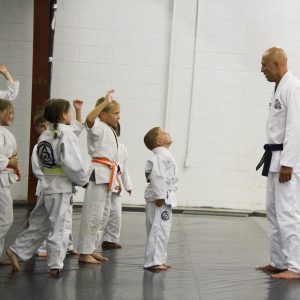The Benefits of Gracie Jiu-Jitsu for Kickboxers
Kickboxing is a fantastic stand-up combat sport, but what if you could elevate your game to a whole new level by adding another dimension to your skills? Gracie Jiu-Jitsu offers that possibility. Whether you’re aiming to compete in mixed martial arts (MMA) or simply looking to expand your abilities as a kickboxer, Gracie Jiu-Jitsu can provide the tools you need. In this article, we’ll dive deep into the benefits of Gracie Jiu-Jitsu for kickboxers and why this martial art is a game-changer.
What is Gracie Jiu-Jitsu?
History and Origins of Gracie Jiu-Jitsu
Gracie Jiu-Jitsu, also known as Brazilian Jiu-Jitsu (BJJ), was developed in the early 20th century by the Gracie family. Its roots lie in Japanese Jiu-Jitsu, but the Gracie family adapted the techniques to emphasize leverage and technique over brute strength. This makes it particularly effective in self-defense situations, even against larger or stronger opponents.
The Philosophy Behind Gracie Jiu-Jitsu
The philosophy of Gracie Jiu-Jitsu centers around the idea that a smaller, weaker individual can successfully defend against a bigger, stronger attacker using proper technique and positioning. Unlike striking martial arts, which rely on speed and power, Gracie Jiu-Jitsu focuses on using leverage, body mechanics, and joint manipulation to control or submit an opponent.
How Kickboxing Differs from Gracie Jiu-Jitsu
Stand-Up vs. Ground Game
Kickboxing is predominantly a stand-up sport, relying on punches, kicks, knees, and elbows. It focuses on movement, distance management, and powerful strikes. Gracie Jiu-Jitsu, on the other hand, is all about ground fighting. Once the fight goes to the mat, a kickboxer without ground skills may find themselves at a disadvantage.
Striking vs. Grappling
In kickboxing, you win by knocking out your opponent or outscoring them with strikes. In contrast, Gracie Jiu-Jitsu is a grappling art, meaning victory comes through submissions or positional control. These different end goals shape the strategies of each sport, but combining both can make you a more complete fighter.
Why Should Kickboxers Learn Gracie Jiu-Jitsu?
Self-Defense and Versatility
One of the key reasons kickboxers should consider learning Gracie Jiu-Jitsu is self-defense. While kickboxing is effective in a stand-up fight, it doesn’t prepare you for situations where an opponent takes the fight to the ground. Gracie Jiu-Jitsu fills this gap, giving you the tools to defend yourself in a wider variety of scenarios.
Complementing Kickboxing’s Limitations
Kickboxing doesn’t train fighters to deal with takedowns, ground control, or submissions. By learning Gracie Jiu-Jitsu, you’re not only covering your weaknesses but also gaining an edge by mastering skills your opponents may not have.
Benefits of Gracie Jiu-Jitsu for Kickboxers
Enhanced Ground Game Skills
For kickboxers, the ground is unfamiliar territory. Gracie Jiu-Jitsu teaches you how to fight off your back, defend against submissions, and escape bad positions. These skills make you far more dangerous in a fight, especially in an MMA setting.
Increased Flexibility and Mobility
Gracie Jiu-Jitsu involves a lot of transitions and positions that demand flexibility. As a kickboxer, you’ll notice improved range of motion in your hips, shoulders, and legs, which translates to more powerful and accurate kicks.
Better Control of the Fight’s Pace
In kickboxing, the pace is often dictated by striking exchanges, but Jiu-Jitsu allows you to slow things down. If an opponent is aggressive, a well-timed takedown or clinch can sap their energy and give you control.
Improving Fight IQ with Gracie Jiu-Jitsu
Understanding Positioning and Leverage
Gracie Jiu-Jitsu is all about using leverage to gain positional dominance. This understanding helps kickboxers learn to manipulate their opponent’s body more effectively, even when striking, leading to more efficient attacks.
Anticipating Opponent’s Moves
By learning Jiu-Jitsu, you develop a greater understanding of how opponents move and react in grappling situations. This translates to better defensive instincts in kickboxing, as you’ll be able to anticipate your opponent’s strikes and takedown attempts more effectively.
Cardiovascular and Strength Benefits
Full-Body Conditioning
Gracie Jiu-Jitsu is a full-body workout that engages muscles often neglected in kickboxing. It strengthens your core, improves your grip, and enhances overall muscular endurance, all of which can benefit your kickboxing performance.
Stamina and Endurance in Combat
The pace of Jiu-Jitsu, combined with its focus on control and endurance, teaches you to stay calm under pressure. This improved cardiovascular conditioning means you’ll be better able to handle the rigors of long kickboxing matches without gassing out.
Mental Benefits of Gracie Jiu-Jitsu
Increased Patience and Focus
Gracie Jiu-Jitsu is as much a mental game as it is physical. You need patience to wait for the right opportunity to execute a technique, and focus to stay aware of your opponent’s every move. These traits are invaluable in a kickboxing match where timing and strategy are everything.
Improved Problem-Solving in the Ring
Jiu-Jitsu teaches you to adapt and problem-solve quickly. Whether you’re escaping a bad position or setting up a submission, the ability to think critically under pressure transfers directly to your kickboxing performance.
Tactics for Integrating Gracie Jiu-Jitsu into Kickboxing
Combining Strikes with Submissions
Learning to blend Jiu-Jitsu with kickboxing opens up new tactical options, such as transitioning from striking to grappling seamlessly. This combination can catch opponents off guard and give you an advantage in mixed combat situations.
Defensive Tactics: Avoiding Takedowns
Kickboxers with Jiu-Jitsu experience will be more adept at defending against takedowns and submissions, allowing them to keep the fight where they excel—on their feet.
Case Studies: Successful Fighters Using Both Styles
MMA Legends Who Excelled in Both
Many legendary MMA fighters, like Anderson Silva and Georges St-Pierre, mastered both striking and grappling. Their ability to transition between these two styles



